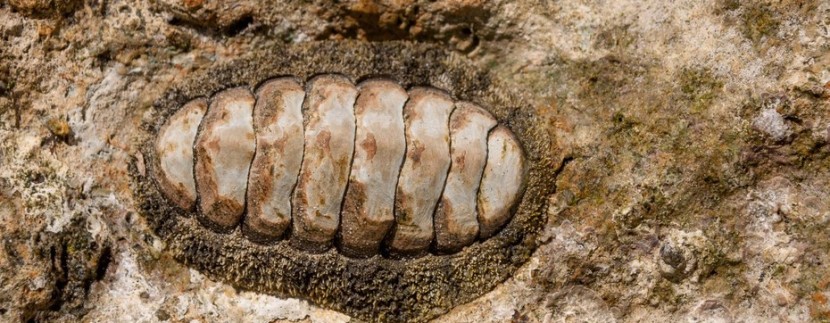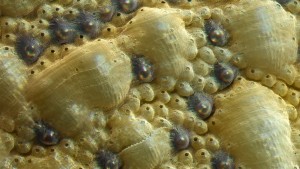Armor plating with built-in transparent ceramic eyes

We also have a lot of them here on Aruba. But what are they? A team of MIT researchers has looked closer than ever before at the unique shells of chitons, using X-rays to discover their secrets. The results reveal a no-compromise setup that provides the tiny sea creatures with both protection and optical visibility. The findings could one day inspire man-made armor with similar abilities.
Turning to nature for ideas for new materials is nothing new. In the past, researchers have looked to fish scales, boxfish shells and even sea sponges for better body armor, and we’ve even seen species of chiton inspiring higher-performing batteries and solar cells.
For the new MIT study, the researchers worked with a fascinating species of chitonknown as Acanthopleura granulata. They have an appearance similar to the rocks amongst which they’re usually found, and are small at only a few inches in diameter.
The creatures have developed a ceramic shell system that’s not only flexible, being comprised of eight overlapping plates, but also provides high levels of visibility, by incorporating tiny eyes throughout. Unlike the vast majority of other living creatures, the chiton’s eyes aren’t made from portein, but are instead made up of the mineral aragonite – the same ceramic that makes up the rest of its shell.
Scientists have identified the little eyes before, but the MIT study represents the first time that we’ve really delved deep into how well they work. Prior to the study, it was thought that the eyes might be too small to form an image.
The team used X-ray tomography to study the architecture of the eyes, which measure less than a tenth of a millimeter in diameter. Further analysis also revealed the size, shape and orientation of the crystalline grains of the lens, which provided key insights into the optical performance.
Using a combination of measurements and theoretical modelling, the researchers determined that the eyes are able to make out images and focus light within a photoreceptive chamber beneath the lens. They’re able to do this both above and below water – a necessity for the species, which lives in intertidal zones.
Not only does the research detail the fascinating nature of the chitons better than ever before, but it could also lead to new armor that incorporates similar dual functionality. It’s certainly early days, but the analysis could well be the first step in the process of making armor that doesn’t compromise on defensive ability to provide high visibility.
“High-resolution structure and property studies of the chiton system provide fascinating discoveries into materials-level tradeoffs imposed by the disparate functinal requirements in this case protection and vision, and are key to extracting design principles for multifunctional bio-inspired armor,” says MIT professor Christine Ortiz.
The researchers published their findings in the journal Science.
Originally written by: David L. Chandler | MIT News Office






